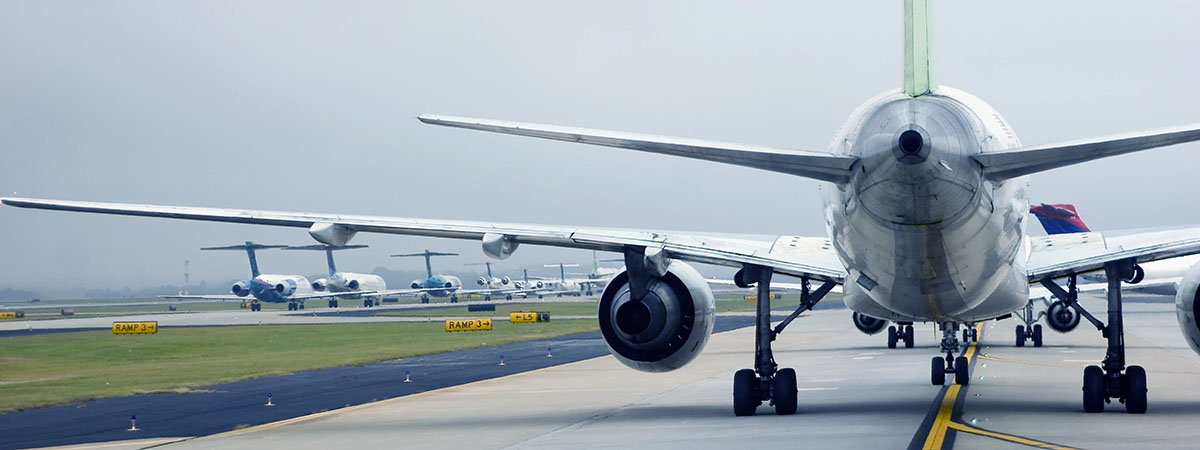Large airports can resemble small cities, and due to multiple logistical reasons they are a potential target for illegal activity on a variety of different levels. Firstly, they transport a huge number of people and goods every day, and their economic impact is highly significant. Secondly, they usually have highly programmed operations. Thirdly, they are widely disseminated in the media due to their global nature. And last but not least, they are public facilities that offer a public service, and their protection involves a high degree of complexity. Air transport is therefore a challenge when it comes to providing adequate physical, personal and operational security – a challenge that, as explained below, every day faces and meets an increasingly rapid positive escalation in results.
The key challenge we are facing right now is to evolve from the traditional reactive nature of security to a proactive and predictive position that can anticipate any new threat and mitigate that threat before it materialises.
Physical safety at airports – that is, airport security – was conceived and has progressively matured throughout the history of aviation. From the beginning of aviation to the present day, security has progressed from small rudimentary checks to the current exhaustive controls on luggage, people and vehicles that are going to access any of the security restricted areas of an airport, whether to take a flight or for any other reason (employees, utilities, etc.).
However, if we look at the history of events, it is undeniable that threats have always been one step ahead of the defensive barriers. In other words, the implementation of new security measures and new plans that provide suitable security against people who aim to carry out acts of unlawful interference (whether for political or any other reasons) has become effective as the need for protection has been detected.
This traditionally reactive approach, under which airport security was originally conceived, can be illustrated by describing some of the most important events in the history of aviation in terms of security, as they have signified turning points in security and have been translated into new security measures or procedural changes adopted in the applicable regulations:
- 1931: The first documented act of unlawful interference, in which the pilot Byron Richards (flying for the company Panagra) was forced to fly for revolutionaries after they hijacked his Ford Trimotor in the city of Arequipa, with the aim of dispersing flyers over the city. The escalation and growing number of such attacks on aviation resulted in the implementation of the first security measures at airports and airlines.
- 1970: The major event that led to the installation of the first metal detectors and X-ray machines for hand luggage in 1973 involved multiple hijackings perpetrated by the Popular Front for the Liberation of Palestine, known as the Dawson’s Field hijackings.
- 1985 and 1988: The fatalities that occurred with the explosion of Air India flight 182 and another of the same company on the ground, and of Pan Am flight 103 over Lockerbie (Scotland), all caused by explosives placed in hold baggage, led the international community to reassess the handling of such baggage and its inspection, which had not been considered until then. It also established the need to associate all boarded passengers with their checked baggage.
- 2001: The event that took place on the 11th of September of that year, which involved three hijacked aircraft attacking the World Trade Center in New York and the Pentagon in Washington, is of unquestionable relevance. Most of the security measures adopted since this event are contained in Amendment 11 of ICAO Annex 17 (2006).
- In recent years, there have been a few security incidents (many of them fortunately unsuccessful attempts) that have necessitated the adaptation of the standard in terms of concepts, procedures and inspection equipment in order to face the new threats identified: independent inspection of footwear, incorporation of ETD (Explosives Trace Detector) equipment, restrictions in the transport of liquids, extension of the security restricted area to include access to airport facilities, etc.
This is only a brief overview of some of the events of unlawful interference that have taken place, which demonstrate the reactive approach taken in air transport security since its inception. This was due to the difficulty of foreseeing future acts of unlawful interference and of detecting potential security breaches under this approach.
The real question is, what can be realistically and feasibly done to address threats to air transport in its current context?
This question has already been asked some time ago in aviation, and its answer undoubtedly lies in the approach to security mentioned above. The key is to evolve from the traditional reactive nature of security to a proactive and predictive position that can anticipate any new threat and mitigate that threat before it materialises. Another essential aspect is to review the characteristics of the airport environment that make it a target for acts of unlawful interference, with the aim of turning them around in favour of security.
Finally, we must not forget that illicit activity is dynamic: it develops and evolves. That is why airport security has decided to take the lead with an updated approach. That is why airport security is changing the strategic advantage that has historically been held by the illicit activity. That is why airport security in the future, and even in the present, must become proactive security.



